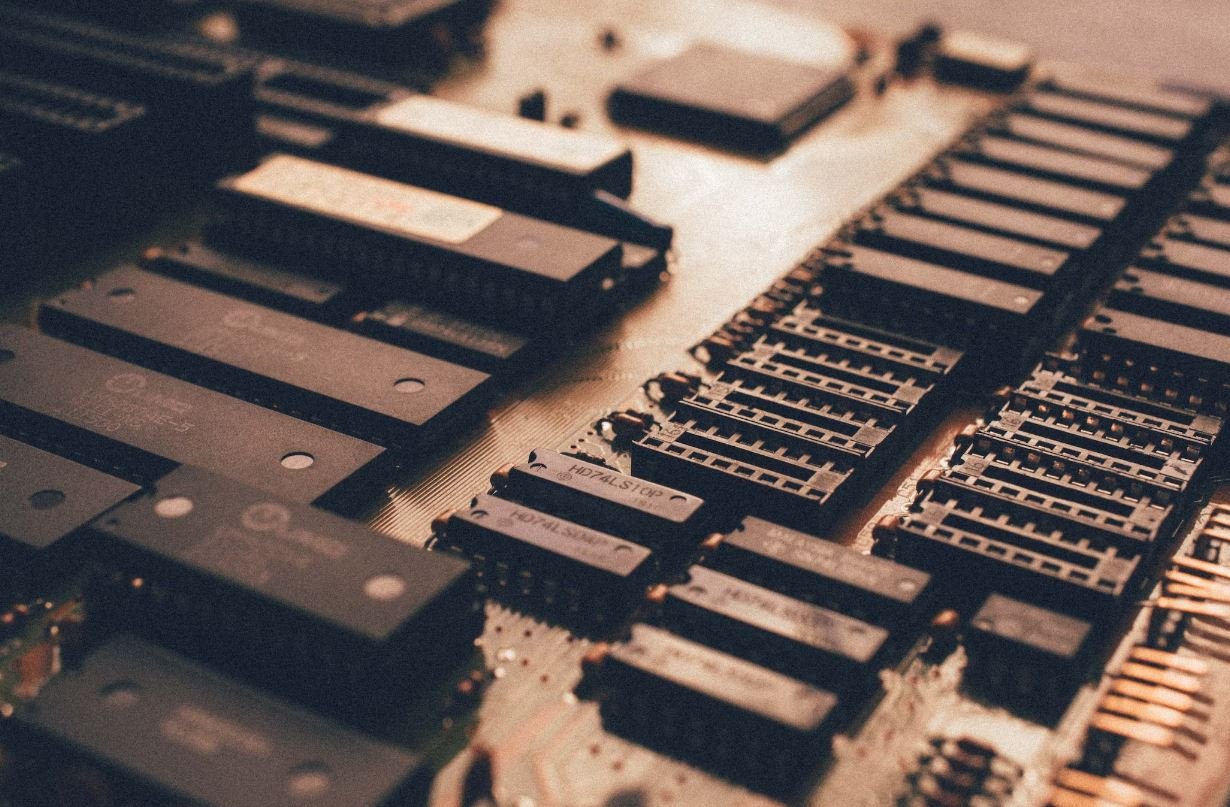AI Deepfake Tool
In recent years, there has been a significant rise in the use of deepfake technology, a type of artificial intelligence (AI) that can manipulate and alter videos or images to make them appear real, yet they are entirely fabricated. AI deepfake tools have become increasingly sophisticated, raising concerns about the potential misuse and ethical implications of this technology. In this article, we will delve into the key aspects of AI deepfake tools, their impact, and potential countermeasures.
Key Takeaways:
- AI deepfake tools use advanced machine learning algorithms to create convincing fake videos or images.
- They can be used for both harmless entertainment purposes and malicious activities, such as spreading misinformation.
- Regulation, education, and digital forensics are critical in combating the negative effects of deepfake technology.
Understanding AI Deepfake Tools
AI deepfake tools utilize **machine learning techniques** to analyze and alter videos or images, thereby creating convincing fake media content. The algorithms used by these tools are trained on vast amounts of data, enabling them to **learn and mimic human-like behavior** in generating fake visuals. The results, in some cases, are nearly indistinguishable from authentic content.
It is important to note that while deepfakes can be incredibly realistic, they often have their **flaws or inconsistencies** that keen observers can identify. For instance, subtle distortions around facial features or unnatural movements may be present if scrutinized closely.
*Interestingly, deepfakes have also garnered significant attention and popularity as a new form of creative expression in the entertainment industry.*
The Impact of Deepfake Technology
Deepfake technology has far-reaching implications, ranging from the humorous to the outright malicious. Some of the impacts include:
- **Spreading misinformation:** Deepfakes have the potential to spread false information or incite discord by maliciously manipulating visual and auditory content.
- **Threats to personal privacy:** AI deepfake tools can be used to create non-consensual explicit content, compromising individuals’ privacy.
- **Political manipulation:** Deepfake videos can be deployed to undermine political figures or shape public opinion through false narratives.
*It is critical for users of social media and online platforms to remain mindful of such risks and approach any audiovisual content with a healthy skepticism.*
Countermeasures against Deepfakes
In the battle against the negative impacts of deepfake technology, several countermeasures have emerged:
- **Regulation and legislation:** Governments have started to explore and enact laws to regulate the creation and dissemination of deepfake content.
- **Digital forensics:** Specialists in digital forensics play a crucial role in identifying and authenticating deepfake media content.
- **Education and awareness:** By promoting media literacy and increasing awareness about deepfakes, individuals can become more discerning consumers of media.
Interesting Data on Deepfake Technology
Here are three tables showcasing some intriguing data on the development and use of AI deepfake tools:
| Statistics | Year | Data Source |
|---|---|---|
| Estimated number of deepfake videos online | 2020 | Deeptrace |
| Number of deepfake tools available for public use | 2021 | AI Deepfake Detection Challenge |
| Global economic impact of deepfake scams | 2022 | Forbes |
Conclusion
AI deepfake tools have undoubtedly revolutionized digital media, providing both opportunities for creativity and significant risks for misuse. As the technology continues to evolve, it is crucial to remain vigilant and actively implement countermeasures such as regulation, education, and digital forensics. Only by doing so can we effectively combat the negative effects of deepfake technology and ensure a safer and more informed digital landscape.

Common Misconceptions
Paragraph 1: AI Deepfake Tool is Always Used to Create Fake News
- AI deepfake tools can be used for purposes other than creating fake news.
- They can be used for entertainment purposes, such as in movies or video games.
- AI deepfake tools can also be employed in research and development projects.
One common misconception about AI Deepfake Tools is that they are only used to create fake news. While it’s true that deepfake technology can be used for malicious purposes, such as spreading misinformation or manipulating public opinion, it is essential to recognize that deepfake tools have other practical applications. For instance, they can be utilized in the entertainment industry to enhance visual effects in movies or video games. Additionally, scientists and researchers can utilize deepfake tools for various research and development projects.
Paragraph 2: AI Deepfake Tools are Always Perfect and Undetectable
- AI deepfake tools are not always perfect in replicating human faces and voices.
- There are often visual or audio cues that can help detect deepfake content.
- Misaligned facial features or inconsistencies in speech patterns can indicate a deepfake.
Another misconception is that AI deepfake tools are flawless and impossible to detect. However, this is not always the case. While deepfake technology has significantly advanced, there are still visual and audio cues that can aid in the identification of deepfakes. For example, misaligned facial features or inconsistencies in speech patterns may indicate that the content is a deepfake. Therefore, it is incorrect to assume that all deepfakes are entirely undetectable.
Paragraph 3: AI Deepfake Tools are Legal in All Circumstances
- Some jurisdictions have laws and regulations in place regarding the use of deepfake technology.
- Using deepfake tools for malicious purposes can have legal consequences.
- Falsely presenting someone’s likeness can infringe on their rights and lead to legal action.
It is crucial to note that AI deepfake tools are not legal in all circumstances. Different jurisdictions may have specific laws and regulations regarding the use of deepfake technology. Using deepfake tools for malicious purposes, such as spreading false information or defaming someone, can have legal consequences. Misrepresenting someone’s likeness through deepfake content can infringe on their rights and potentially result in legal action being taken against the creator of the deepfake.
Paragraph 4: AI Deepfake Tools are Only a Threat to Individuals
- AI deepfake tools can also pose a threat to businesses and organizations.
- They can be used for corporate espionage or to damage a company’s reputation.
- Deepfake technology can be employed to manipulate stock prices or disrupt financial markets.
An often overlooked misconception is that AI deepfake tools are solely a threat to individuals. While individuals can indeed be targeted through deepfake content, businesses and organizations are also at risk. Deepfake technology can be utilized for corporate espionage, with malicious actors using deepfakes to gain access to sensitive information or disrupt operations. Moreover, deepfakes can be employed to damage a company’s reputation or manipulate stock prices, potentially leading to significant financial losses or disruptions in the market.
Paragraph 5: AI Deepfake Tools Are Inherently Evil
- AI deepfake tools themselves are neutral; it is the intent behind their use that determines their impact.
- Deepfake technology can have positive applications, such as in art or historical preservation.
- The ethical use of deepfake tools must be promoted and guidelines established.
The final misconception is that AI deepfake tools are inherently evil. In reality, deepfake tools themselves are neutral tools; it is the intent behind their use that determines their impact. Deepfake technology has potential positive applications, such as in art or historical preservation, where it can be utilized to recreate historical figures or bring artwork to life. However, it is crucial that the ethical use of deepfake tools is promoted, and guidelines and regulations are established to mitigate their potential misuse.

Table: Popular AI Deepfake Tools
Here is a list of some popular AI deepfake tools that have gained popularity in recent years. These tools have been used to create highly realistic and convincing deepfake videos:
| Tool | Description | Creator | Year Released |
|---|---|---|---|
| DeepFaceLab | A comprehensive deepfake creation software with advanced features. | iperov | 2018 |
| FaceSwap | An open-source tool that allows seamless face swapping in videos. | deepfakes | 2019 |
| Avatarify | An AI tool that can transfer facial expressions from one person to another. | aliaksandrsiarohin | 2020 |
| Reface | A popular mobile app that enables users to replace faces in videos with celebrities. | Nexar | 2020 |
Table: Social Media Platforms and AI Deepfake Policies
Social media platforms have been grappling with the spread of deepfakes and have implemented policies to address this issue. Here’s an overview of the policies of major platforms:
| Platform | Policy | Implementation Date |
|---|---|---|
| Banning deepfake videos that are manipulated to deceive users. | January 2020 | |
| Multiple policies in place to address synthetic and manipulated media. | March 2020 | |
| YouTube | Removal of deepfake content that violates their community guidelines. | February 2020 |
| TikTok | Banning videos created using AI deepfake tools. | April 2020 |
Table: Deepfake Usage Scenarios
Deepfake technology has been employed in various scenarios, both for entertainment and potentially nefarious purposes. Here are some examples:
| Scenario | Description |
|---|---|
| Entertainment | Creating deepfake videos for humorous or satirical purposes. |
| Political Manipulation | Using deepfakes to discredit or spread misinformation about political figures. |
| Rehabilitation | Employing deepfakes to help individuals recover lost motor or speech skills. |
| Cybersecurity | Testing potential vulnerabilities in facial recognition systems through deepfakes. |
Table: Deepfake Detection Techniques
Researchers have been developing various techniques and algorithms to detect deepfake videos. Here are some commonly used methods:
| Technique | Description |
|---|---|
| Face Occlusion Analysis | Examining occlusions and inconsistencies around the face to identify deepfakes. |
| Temporal Consistency | Checking for discrepancies in facial movements over time to reveal deepfakes. |
| Analysis of Pupil Dynamics | Studying changes in pupil dilation to detect potential manipulation. |
| Glare Analysis | Looking for irregularities caused by lighting reflections on the eyes. |
Table: Ethics of Deepfake Technology
With the rise of deepfake technology, ethical considerations have emerged. Here are some important questions to ponder:
| Question | Discussion |
|---|---|
| Consent and Privacy | Should deepfake videos require consent from individuals involved? |
| Misuse and Harm | What potential harm can deepfake technology cause if misused? |
| Authenticity and Trust | How can deepfake proliferation impact trust in media and information? |
| Legal Implications | Are there laws or regulations in place to address the misuse of deepfakes? |
Table: Impact of Deepfakes on Society
The widespread availability of deepfake technology has had significant implications across society. Here are a few key areas of impact:
| Area | Impact |
|---|---|
| Media Credibility | Deepfakes challenge the authenticity and credibility of visual media. |
| Political Landscape | Deepfakes can be used to manipulate opinions and affect electoral processes. |
| Identity Theft | Impersonation through deepfake videos can lead to identity theft or fraud. |
| Creative Expression | Deepfakes allow for new forms of artistic expression and storytelling. |
Table: Deepfake Regulation by Country
Countries around the world have started implementing laws or regulations to address the potential dangers of deepfake technology. Here are a few examples:
| Country | Regulation | Year Enacted |
|---|---|---|
| United States | California bans deepfake porn without consent. | 2020 |
| South Korea | Harmful deepfake distribution criminalized. | 2018 |
| Germany | Deepfakes may fall under defamation and copyright laws. | 2019 |
| China | Ban on deepfake news without clear disclosure. | 2019 |
Table: Deepfake Attacks on Businesses
Deepfake technology poses risks to businesses as attackers may leverage these tools for malicious purposes. Here are some examples of deepfake attacks:
| Attack Type | Description | Consequences |
|---|---|---|
| CEO Fraud | Deepfake audio impersonating a company’s CEO to deceive employees into sharing sensitive information or initiating unauthorized transactions. | Financial loss, reputational damage. |
| Impersonation | Using deepfake videos to impersonate high-ranking executives and eliciting fraudulent actions from employees or partners. | Compromised business operations, loss of trust. |
| False Endorsement | Creating deepfakes of celebrities or influencers endorsing fake products or services, leading to consumer deception. | Brand damage, potential legal ramifications. |
| Industrial Espionage | Using deepfakes to sabotage business dealings or steal sensitive information. | Loss of competitive advantage, intellectual property theft. |
In conclusion, AI deepfake tools have rapidly evolved, enabling the creation of highly convincing manipulated media. While these tools have various legitimate applications, such as entertainment and rehabilitation, they also pose significant challenges. Deepfakes raise concerns regarding privacy, consent, media credibility, and potential misuse. The development of detection techniques is essential for combating the spread of deepfakes, and regulations are being introduced worldwide to address the associated risks. As businesses grapple with the threats posed by deepfakes, vigilance and safeguards are crucial to mitigate potential harm.
AI Deepfake Tool Frequently Asked Questions
What is an AI Deepfake Tool?
An AI Deepfake Tool is a software or application that uses artificial intelligence technology to manipulate and alter visual and audio content. It can create realistic videos and images that appear to be genuine but are actually fabricated.
How does an AI Deepfake Tool work?
An AI Deepfake Tool works by using machine learning algorithms to analyze and understand patterns in existing data such as videos and images. It then applies this knowledge to generate new content that mimics the original data, often by swapping faces or altering speech and gestures.
What are the potential uses of an AI Deepfake Tool?
An AI Deepfake Tool can be used for various purposes, such as entertainment, video editing, and visual effects in movies or television. However, there are concerns about its potential misuse, such as spreading disinformation, fake news, and manipulating people’s perceptions.
Are all AI Deepfake Tools malicious or unethical?
No, not all AI Deepfake Tools are inherently malicious or unethical. While the technology can be misused for harmful purposes, there are legitimate and responsible uses as well. For example, it can be used for creative expression, research, and educational purposes.
What are the risks associated with AI Deepfake Tools?
The risks associated with AI Deepfake Tools include the spread of misinformation, damage to reputation, erosion of trust, privacy breaches, and potential threats to national security. Deepfakes can be used to create convincing fake videos or images that can manipulate public perception and deceive individuals.
How can we detect and combat AI Deepfakes?
Detecting and combating AI Deepfakes is a complex challenge. It requires a combination of technological solutions, such as deepfake detection algorithms and forensic analysis tools. Additionally, raising awareness, promoting digital literacy, and developing policies and regulations can help mitigate the negative effects of deepfakes.
Are there legal implications associated with AI Deepfake Tools?
Yes, there are legal implications associated with AI Deepfake Tools. Misusing deepfake technology can violate laws related to privacy, intellectual property, defamation, and possibly even national security. Different jurisdictions may have specific legislation governing deepfakes, and it is important to ensure compliance with such laws.
How can individuals protect themselves from AI Deepfake manipulation?
Individuals can protect themselves from AI Deepfake manipulation by being cautious and critical of the content they encounter online. They should verify the authenticity of the sources, cross-reference information, and rely on trusted sources for news and information. Developing media literacy skills and staying informed about deepfake technology can also help individuals identify potential manipulations.
What are some ongoing research and development efforts to address AI Deepfakes?
There are ongoing research and development efforts to address AI Deepfakes. These include the development of advanced detection methods, creating publicly available datasets for training and testing deepfake detection algorithms, and collaboration between industry, academia, and policymakers to establish guidelines and best practices.
Is there an international consensus on regulating AI Deepfake Tools?
There is no unified international consensus on regulating AI Deepfake Tools. However, several countries and organizations are actively working on developing policies, regulations, and ethical guidelines to address the potential risks and abuses associated with deepfakes. Coordinated efforts are essential to tackle this global challenge effectively.




